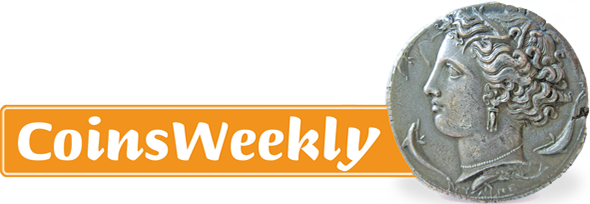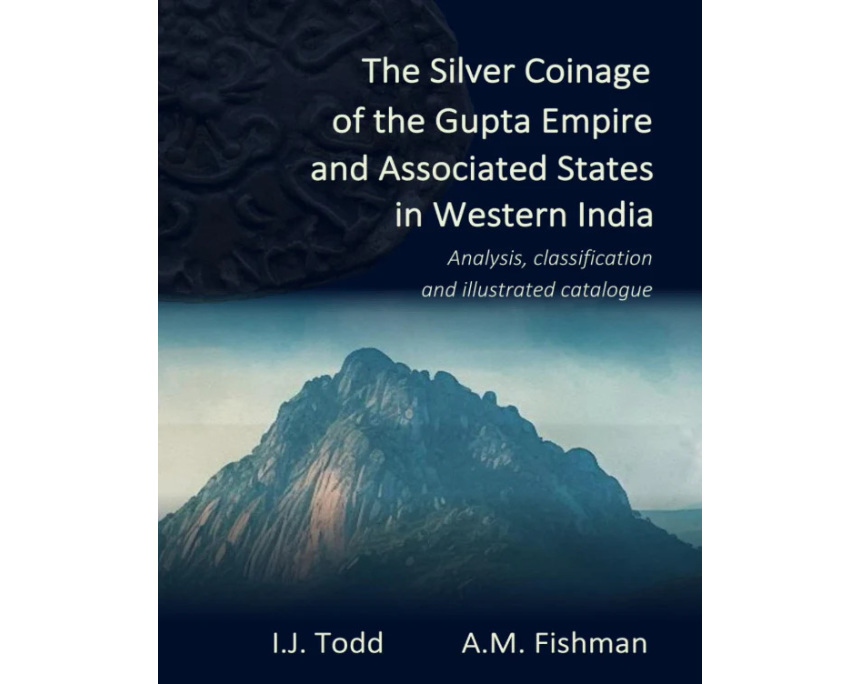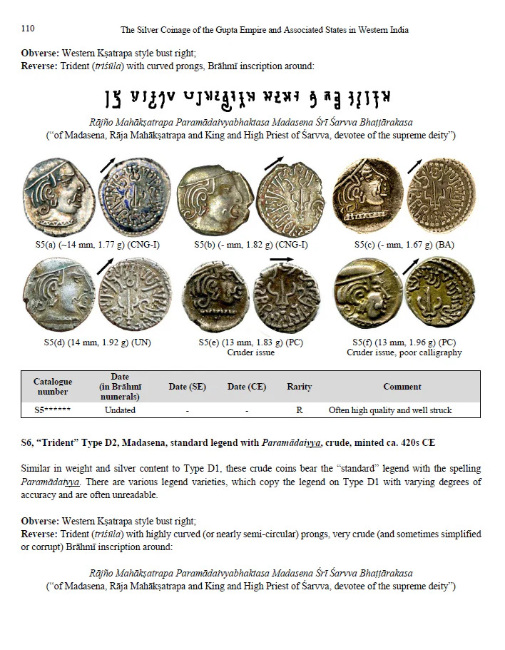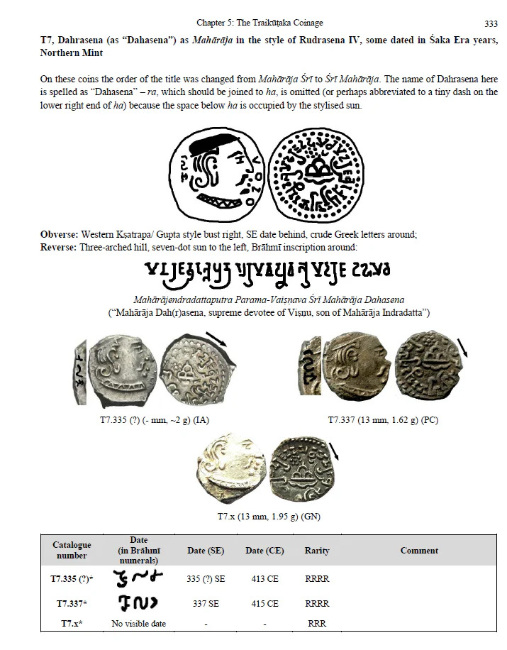The Silver Coinage of the Gupta Empire and Associated States in Western India: Analysis, Classification and Illustrated Catalogue
Authors Ian J. Todd and A.M. Fishman have published a new book on the silver coinage of the Gupta Empire and associated states in western India. Read their announcement here.
Dealing with the silver coinage and events around the time of the fall of the Western Kṣatrapa kingdom in the period 398-415 CE, and in the century that followed, this work comprehensively catalogues unprecedented integrated coin classifications for – and fresh historical conclusions about – the Gupta empire and associated states including the Traikūṭakas and Kalachuris. It also broadens the known history of the Western Kṣatrapas by identifying the coinage of two individuals who succeeded the kingdom’s last great ruler; and through detailed analysis introduces the previously unknown “Second Kṣatrapa Kingdom” ruled by a king named Madasena and his sons, and with coinages formerly misattributed to the Maitrakas of Valabhī and the Western Kṣatrapas.
The 358 page, independently published, book is available in paperback or hardcover.
Recommendations
The Silver Coinage of the Gupta Empire and Associated States in Western India has received favourable recommendations from numerous esteemed numismatists, in particular:
Wilfried Pieper, author of Ancient Indian Coins – A Comprehensive Catalogue:
“Long-awaited, urgently needed! The new landmark publication by Ian Todd and Alexander Fishman on the silver coins of the Gupta kings and their contemporaries – starting with the fall of the last Kṣatrapas – is a gain in scientific knowledge for historians and numismatists alike, a real reading pleasure, a must-have for each and every collector. Old tracks are re-read and re-evaluated, new coins and new names are presented, loose ends are tied together. The result is an exciting journey through, and a completely new picture of, the political and numismatic history of 5th century India.”
Dr. Harry Falk, a noted Indologist, retired professor and Director of the Institute of Indian Philology and Art at the Free University in Berlin:
“The Gupta dynasty initiated a glorious phase in the history of India. Its advances and achievements are reflected in the magnificent coins it produced, and the same coins are an indispensable tool for a correct description of the political development. This catalogue is all-encompassing, regarding the sheer mass of its contents and its possible interpretations alike. This book will be essential for serious historiography for generations to come.”
John Deyell, author of Living Without Silver; Treasure, Trade and Tradition; From Mountain Fastness to Coastal Kingdoms; and Lakshmi, Bearer of Riches:
“In times past, the people of peninsular Gujarat were well known for their strong preference for small silver coins.This gave rise to large quantities of carefully-engraved drammas that have attracted the attention of numismatists for many generations now. A great deal of them are well identified and classified, but many others are still subject to considerable debate. Todd and Fishman are to be congratulated for tackling the knottier problems of attribution, and for presenting us a lucid and convincing catalogue that very cogently ties together the long succession of Kṣatrapa – Gupta – Traikūṭaka – Kṛṣṇarāja silver drammas into an evolutionary succession. In doing so they have, once again, provided numismatists a rich databank of epigraphic, metrological and metallographic information that should foster future interest, and research, into this interesting series.”
Robert Senior, author of Indo-Scythian Coins and History Volumes I-IV and The Coinage of Hermaios and its Imitations Struck by the Scythians:
It takes exceptional people to interpret the mass of information about sequences, dates, rulers and contemporaries that is uniquely available from the silver coinages of the Guptas and associated states – and then present it in all its complexity in the clearest of drawings, diagrams and illustrations. Todd and Fishman’s book is a splendid read, full of new interpretations and ideas which has filled a huge gap in our knowledge and is an achievement of the first order. It will be the standard reference for at least a generation.










